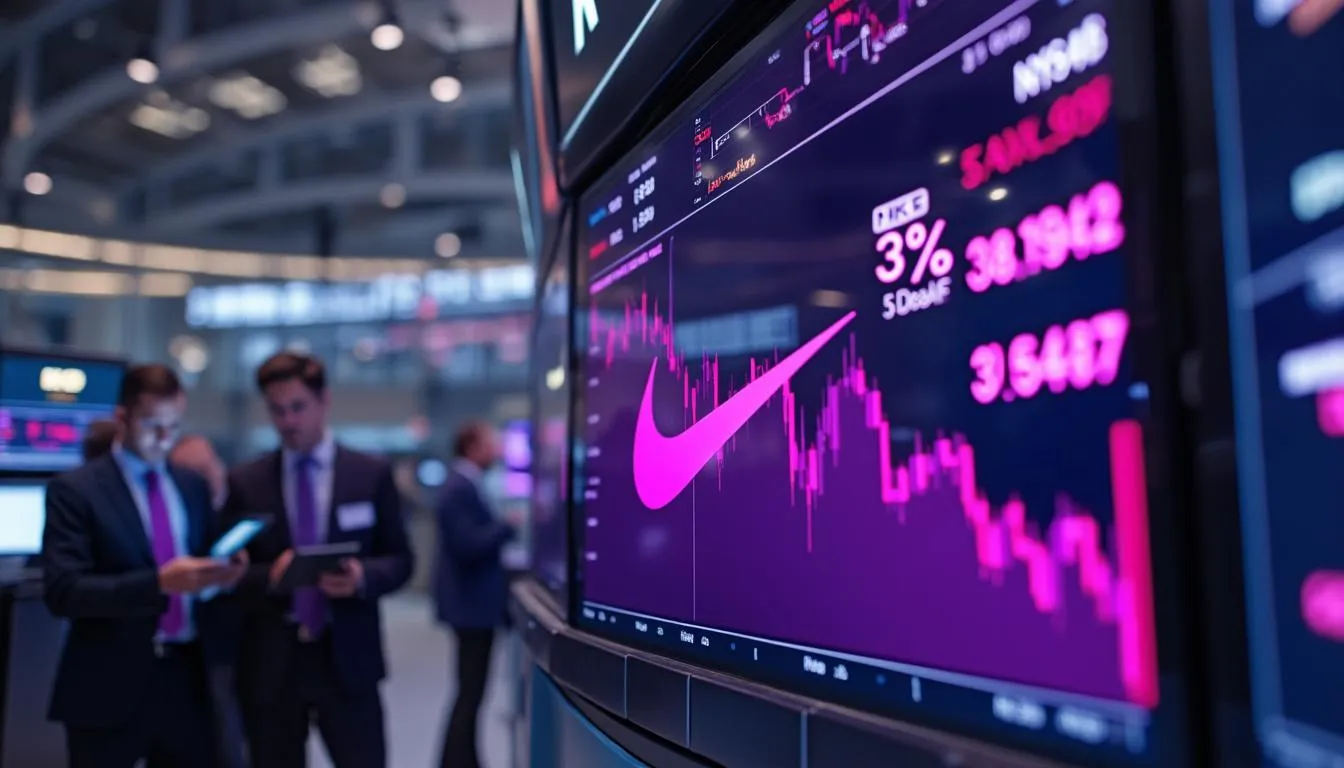Evaluating the Impact of JP Morgan’s Downgrade Amidst Resilient Fundamentals and Sector Shifts
Despite a robust run and solid operational metrics, Group 1 Automotive, Inc. (GP1) faces a recalibration from one of Wall Street’s most influential research houses. On July 17, 2025, JP Morgan shifted its rating from Overweight to Neutral, dropping its price target to $415—below the current trading price of $443.62. This move, with about a 6.4% implied downside, prompts serious reflection: Does this call herald a genuine inflection point for the nation’s third-largest auto retailer, or is it a prudent hedge after a year of outsized gains?
Group 1 Automotive, Inc. is a leading player in the automotive retail sector, operating nearly 200 dealerships across the US and UK. Its business model combines new and used vehicle sales, parts, service, and finance operations, generating strong recurring revenue streams. Analyst upgrades and downgrades from major firms like JP Morgan are critical markers for investors, often foreshadowing sector rotation, valuation resets, or key inflection points in company-specific outlooks.
Key Takeaways:
Potential Downside: JP Morgan’s new $415 target represents a 6.4% decline from the current price, signaling a shift in sentiment and caution on near-term upside.
Stock Price Performance: GPI remains near its annual highs, having rallied from a $298.92 low to a $490.09 peak. Recent days have seen consolidation, with the current price slightly down from last close.
Earnings and Dividend Strength: The company is highlighted as a potential earnings beat candidate and has been featured among top dividend growth stocks for income seekers.
Sector Sentiment: The downgrade comes as auto retail faces cyclical headwinds, but also after a period of broad outperformance and heightened volatility.
News Highlights: Recent analyst commentary points to both resilient fundamentals and questions about further upside after a strong run.
JP Morgan’s Downgrade: Context and Implications
Analyst Firm Background and Significance
JP Morgan is synonymous with institutional influence and sector expertise. Their equity research division is a top-3 force on Wall Street, with a deep bench of analysts focused on US consumer and cyclical sectors. A rating change from JP Morgan is rarely dismissed by the market; it often catalyzes broader sentiment shifts, especially for mid-cap names like GPI that are sensitive to institutional flows.
JP Morgan’s move from Overweight to Neutral is significant. It signals that the risk-reward profile for GPI has, in their view, become balanced, or potentially skewed to the downside after a period of sustained outperformance. The new $415 price target—set below the current market price—suggests that, in JP Morgan’s view, the stock has run ahead of fundamentals or faces incremental risks not fully priced in by the market.
The absence of an updated prior price target indicates this is a valuation-led call, rather than a reaction to a specific downgrade in earnings or operations. Historically, JP Morgan’s sector calls have led to meaningful short-term volatility, and their coverage is followed closely by both active and passive fund managers.
"Group 1 Automotive has delivered impressive growth, but with sector headwinds and valuation at the high end of historical ranges, we believe a more balanced stance is warranted." — JP Morgan Research, July 2025
Stock and Financial Performance: Riding High, Facing Headwinds
Over the past year, GPI has been a standout performer, climbing from a 52-week low of $298.92 to a high of $490.09. The current price of $443.62 places it near the upper range of this band, with the stock up sharply year-to-date. Technical indicators, including a 20-day EMA of $453.39 and an RSI of 54.2, suggest the stock is neither overbought nor oversold, but momentum is waning.
Volume analysis reveals a recent drop-off from the highest volume day (June 25th), implying that the rally may be losing steam. With 130 up days versus 118 down days over the past year, sentiment has been positive, but the balance is tightening. Average daily volatility remains elevated at over 11 points, underscoring the risk of sharp moves in either direction.
Financially, GPI’s operational performance has been robust. Recent news highlights strong earnings and dividend growth, with recurring service revenue providing a cushion against cyclical downturns. However, the auto retail sector is increasingly sensitive to macro headwinds, including higher interest rates, tightening consumer credit, and moderating new vehicle demand.
Sector and Macro Backdrop: Auto Retail at a Crossroads
The US auto retail space has outperformed broader indices over the past 18 months, as pent-up demand and supply chain normalization boosted margins. However, there are emerging signs of sector fatigue. Rising borrowing costs, a potential cooling in used car prices, and greater competition from digital retail platforms are all factors clouding the outlook.
Recent Zacks commentary (“Group 1 Automotive (GPI) is Poised to Beat Earnings Estimates Again”) points to continued operational strength, but also cites a consensus view that further stock price upside may be limited in the near term. The company’s inclusion in dividend growth portfolios highlights its cash flow resilience, but may also point to a shift in investor focus from capital appreciation to income generation as growth moderates.
Potential Downside and Risk Assessment
With JP Morgan’s $415 target price, investors face a potential downside of 6.4% from current levels. While not an extreme call, it does indicate a period of expected consolidation or mild correction. For investors with existing positions, this could be a signal to trim allocations or employ defensive strategies, particularly given the stock’s proximity to technical resistance levels and its elevated valuation versus historical norms.
For new investors, the downgrade may serve as a catalyst to adopt a wait-and-see approach, looking for either a reset in valuation or fresh evidence of operational outperformance before committing new capital.
Recent News, Expert Views, and Market Dialogue
Recent analyst and media coverage is nuanced:
Zacks Investment Research highlighted GPI as likely to beat earnings again, emphasizing its history of positive surprises and operational agility (source).
GPI was also named among the top 5 dividend growth stocks for a "safe, income-driven portfolio," underscoring its appeal to defensive investors (source).
However, a recent article notes that after a 3.1% rally, the case for further upside is becoming less clear, with higher-than-average volumes signaling possible distribution (source).
“The latest trend in earnings estimate revisions may not translate into further price increase in the near term.” — Zacks Investment Research, July 2025
Strategic Considerations for Investors
Defensive Positioning and Portfolio Implications
For existing shareholders, the JP Morgan downgrade—especially coming from a top-tier firm with deep sector knowledge—can’t be ignored. While the downgrade is not a doomsday call, it does flag heightened risk at current price levels. Investors may want to:
Reassess position sizes, especially in concentrated portfolios.
Consider hedging strategies or covered calls to protect gains.
Monitor upcoming earnings and macro data for inflection points.
For new money, patience may be the best course. The company’s fundamentals remain robust, but macro and sector risks are rising, and valuation is no longer a tailwind.
What Could Change the Narrative?
Key catalysts that could reverse or reinforce JP Morgan’s caution include:
A material earnings beat and upward revision to guidance.
Evidence of accelerating service revenue or market share gains.
Macro shifts (e.g., lower rates, improved auto credit conditions) that reignite sector momentum.
Conversely, a weak quarter or a sustained drop in used car prices could validate the downgrade and pressure the stock further.
Conclusion: Caution Warranted, Not Capitulation
JP Morgan’s move to Neutral on Group 1 Automotive marks a clear turning point in the narrative for one of auto retail’s top performers. The implied 6.4% downside is a notable, but not drastic, call for caution—reflecting both sector risks and the stock’s impressive run to date. The message is clear: stay vigilant, reassess risk, and look for fresh evidence before doubling down on what has been a rewarding trade.
While GPI’s operational foundation remains strong, the combination of valuation, sector headwinds, and a high-profile downgrade means the easy gains are likely behind us—at least for now. This is a moment for discipline, not panic, and for watching closely how both the company and the broader auto retail sector respond to a shifting market tide.

.svg)
.svg)
.svg)
.svg)

.svg)

.svg)
















